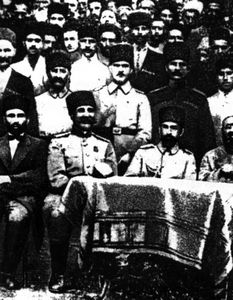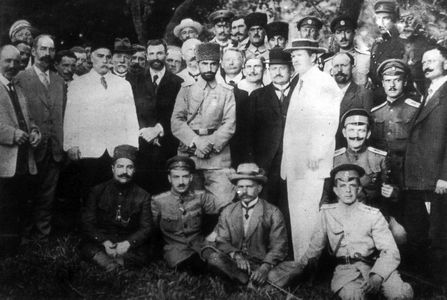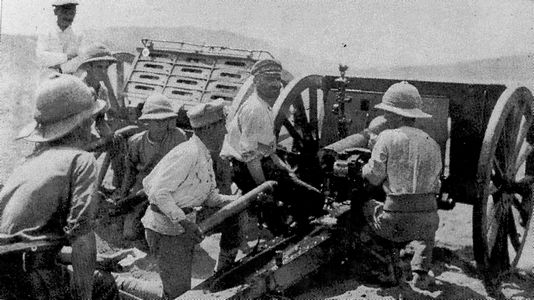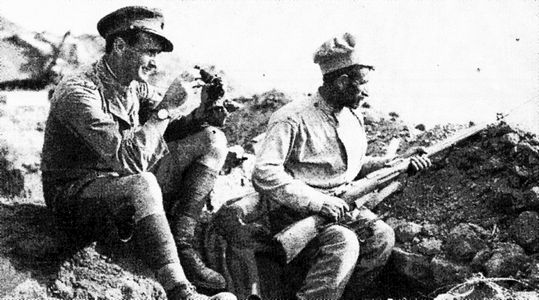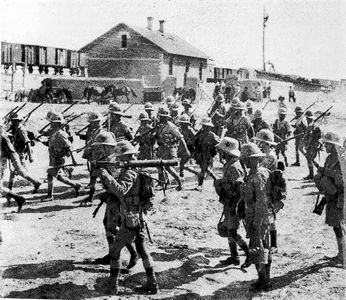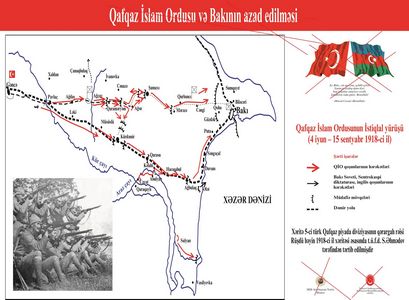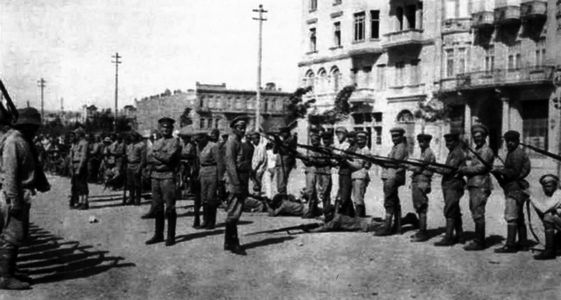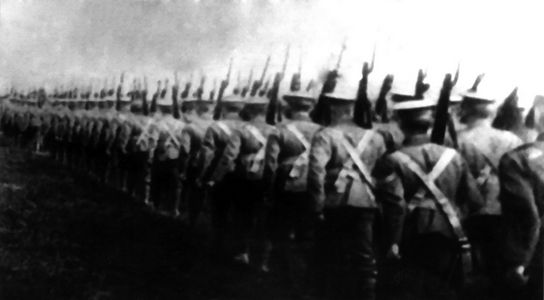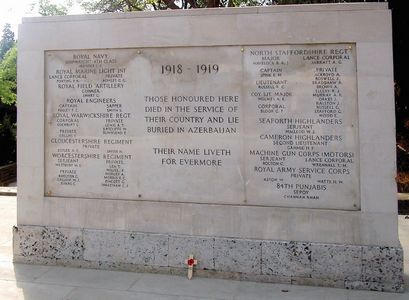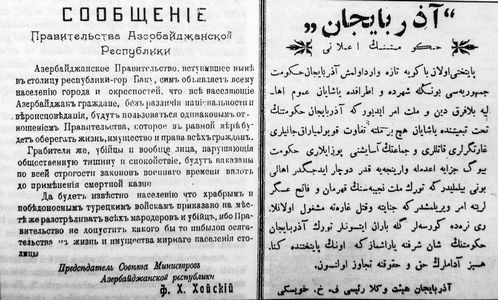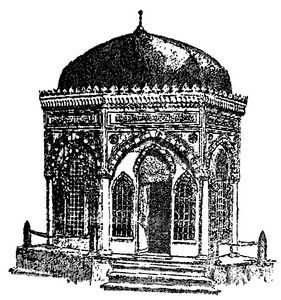Creation of the Caucasian Islamic Army
“If we believe that 28 May is the day of official declaration of independence, then enter of Azerbaijan troops and Azerbaijan government into Baku on 15 September we may consider as achievement the real independence, establishing the foundations of the state. On this day was liquidated eliminated a terrible threat to the independence of Azerbaijan and other republics of Transcaucasia from the Bolshevik-dashnak forces as well as a threat to physical existence itself of entire Turkic population of Transcaucasia”.
On 15 September, 1919 a newspaper “Azerbaijan”
Armenians having taken advantage of a situation in Russia during the First World War, after the October and February coups aimed to take control over Baku that was the largest economic center of the Caucasus, saw the city as the part of the mythical “Great Armenia”.
The bolsheviks tended to think of Baku and Azerbaijan only as the part of Soviet Russia, and in its turn, the dashnaks saw it as the part of the mythical “Great Armenia. Notwithstanding, while their goals were differed widely both in the coverage of the issue they had the only adversary and it was the Azerbaijani population supporting their party, first of all the party “Musavat”. In order to annihilate this political adversary they followed through the policy of ethnic cleansing.
On March 30, 1918 the armenian - bolshevik “Red guards” launched attack on the azerbaijani Baku neighborhoods. On March 31, assaults turned into the massacre of azerbaijani population regardless of their political affiliation. Massacre of Azerbaijani people was continued until the mid of 1918, and had been slaughtered 50,000 of Azerbaijan population.
In the western lands of Azerbaijan were also continued attacks on Azerbaijan areas of Irevan, Nakhchivan, Zangezur, Karabakh. Bolshevik S.Shaumian headed a slaughter in Baku Gubernia, and dashnak Andranik acted in western regions being closely connected with each other.
Zakavkazskiy Seim that was established on 10 February, in 1918 despite of the all efforts of azerbaijani deputies led by M.E. Rasulzadeh couldn’t prevent the massacre of azerbaijani nation. Furthermore, this situation threatened to the existence of the Azerbaijan people. Foundation of the independent state, the establishment of the armed forces and military assistance from Turkey put an end of the extermination of Azerbaijani population.
On the basis of a treaty of 4 June, 1918 the Ottoman state undertook an obligation to provide military assistance to Azerbaijan Republic. Turkish troops entered Azerbaijan under the command of Nuru-pasha merged its forces with Azerbaijan army under the command of General Aliagha Shikhlinski. That was how the Caucasian Islamic Army was founded.
With the support of the Caucasian Islamic Army was liquidated a threat to entire Azerbaijan Republic, and the republic restored control over its capital Baku city. Battles for Azerbaijan in April - September, 1918 ended with liberation of the capital Baku city.
Dashnak leaders’ plans, who sought to assassinate Azerbaijani population and intentionally disguised by a mask in achieving this target that was failed at the end. Forces tended to turn Azerbaijan into the Colony of Russia had been defeated as well.
Liberation campaign of the Caucasian army
4 June – 15 September, 1918
Pursuant to the enactment of the Government of Azerbaijan issued on June 26, 1918 based on the military units of Muslim Corps was formed the Azerbaijan one. This day is considered to be the formation of the Army Day of Azerbaijan. On June, 27 the Red Army moved on the offensive action, and battles began at Garamaryam-Goychay. Under the command of Armenian and Bolshevik which had 10,000 armed forces and a large number of military equipment had been planned to capture Ganja city by swift blow.
At the beginning of July, 1918 the troops of Baku Soviet made up of 18, 000 soldiers, 19 cannons, 3 armoured trains, several hydroplanes, 4 battle ships, 3 military ferry ships. The assistance to Baku Soviet was rendered under the personal control of V.I. Lenin, and additionally had been sent 4 armoured vehicles, 13 planes, 6 cannons, battle ships, military equipment.
On June, 29 the military forces commanded by Habib Bey Salimov repulsed the attack and moved forward to Kurdamir. As a result of battles at Garamaryam and Goychay the enemy began retreating to Agsu city.
Victory was achieved as the result heroism of officers, soldiers, volunteers forces of the Caucasian Islamic Army, with help of rural dwellers who brought water, provisions and ammunition to the soildiers in arid steppes, and Ottoman soldiers and officers, those who were about to die for Azerbaijan.
In the battle for Salyan the plans of Soviet command fell through to capture on the board of ships Sugovushan and take control over grain stocks of Mugan, the Kura river crossings.
In the battle at Agsu-Kurdamir (on 5-14.07.1918) together with bolshevik and armenian joined and took part troops of L. Bicherakhov and supported them the English troops of armored vehicles as well. Shamakhi campaign (on 19-22.07.1918) was ended with victory Turkish and Azerbaijan troops. In Hajikabul campaign (on 26-31.07.1918) the enemy front was broken, released and were blocked the roads leading from Absheron to north.
Meanwhile, On August, 1 dashnaks, right SRs and mensheviks overthrew the power of bolsheviks and established the “Central-Caspian Dictatorship”. The “Central-Caspian Dictatorship” didn’t recognize the rights of Azerbaijani population to freely determine their future and establish the state. On August, 2 Azerbaijan troops liberated Gusar and Guba cities. The battles in this direction were completed on 8 August, with retreat of Bicherakhov’s troops and liberation of Khachmaz.
On August 4, English troops on the ships arrived in Baku from Enzeli.
On August 5, 1918 Turkish and Azerbaijan armed forces launched the general assault of Baku, nevertheless, they had no strength enough, weapons and military equipment, ammunition. There was heavy fighting around Baku on August 6 – September 12; however, the enemy could not break away from encirclement. The British army arrived at the port of Baku. On August 17, the British army headed by General L. Densterville took command of Baku. 10-12 thousands of armed forces of Centro-Caspian and 1,500 the British army defended their positions in Baku.
On August 27, a treaty was signed between Germany and Soviet Russia: Germany promised to stop and prevent the offensive of Turkish troops to Baku. Soviet Russia, in its turn, pledged to provide Germany with entire ¼ crude oil extractions monthly.
On September 13, Nuru –Pasha signed the resolution to assault of Baku: the attack was considered to be launched on the eve of 14 September. The Caucasian Islamic Army had 26 cannons, and made up of 5,300 Turkish and 8,000 Azerbaijani soldiers.
The assault was launched with infantry attack on Qurd qapisi (Wolf gate). On September 14, there had been seized main positions. By the end of the day had been taken the positions at Bilajari. At 20 General Densterville ordered troops to retreat. On the night of 15 September the British army had to be evacuated from Baku.
On September 15, 1918 Baku was freed, on September 17 the Government of the Azerbaijan Republic moved from Ganja to Baku.
